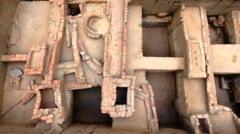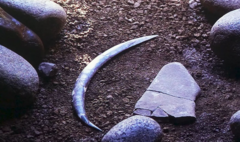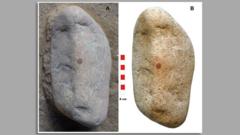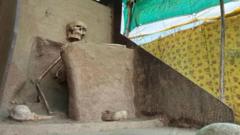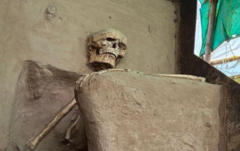In a remarkable yet uncelebrated chapter of archaeological history, Rakhaldas Banerjee, an intrepid Indian explorer, revealed the ancient city of Mohenjo-daro in the 1920s, a crucial part of the Indus Valley Civilization. Despite uncovering such a significant historical site, Banerjee's legacy has faded into obscurity, largely eclipsed by his tumultuous career and controversial reputation.
Born in 1885 in Bengal, Banerjee developed an early fascination with history, propelled by the medieval monuments surrounding him. His career blossomed when he joined the Archaeological Survey of India (ASI) in 1910, quickly progressing to the position of superintending archaeologist by 1917. His biggest breakthrough was in 1919 when he encountered Mohenjo-daro in present-day Pakistan, the largest city of the Indus Valley Civilization, which spanned across parts of North India and Afghanistan.
Despite his groundbreaking work, Banerjee's findings at Mohenjo-daro never received the acclaim they deserved, as they were suppressed within the ASI. Accusations surfaced in later years against ASI chief John Marshall, with claims that he misappropriated credit for the discovery. Historian PK Mishra criticized the mainstream narrative, noting how Banerjee's significant contributions have been reduced to mere footnotes in historical records.
Conflicts with ASI protocols marked Banerjee's career. Historian Nayanjot Lahiri recounted multiple instances where his strong-willed nature led to discord and disputes over funding, which ultimately contributed to his transfer from Mohenjo-daro. His attempts to purchase artifacts without proper permissions further tarnished his reputation.
Despite facing challenges, Banerjee achieved notable discoveries during his excavations, unveiling ancient coins, seals, and other artifacts that revealed the profound history of the civilization he studied. However, by 1924, financial limitations stalled his research, and Banerjee was moved to eastern India. This decision was partly due to a growing list of accusations regarding financial mismanagement and personal misconduct.
Banerjee's career took another hit in 1925 when he became embroiled in a scandal involving the disappearance of a Buddhist idol. Although the case against him was eventually dismissed, the incident added fuel to the fire and led to his forced resignation from ASI in 1927.
After leaving ASI, he took up a teaching role at Banaras Hindu University (BHU), yet struggled with financial instability due to his extravagant lifestyle. Tragically, Rakhaldas Banerjee's remarkable life came to an early end in 1930 at the age of 45, leaving behind a legacy that deserves to be revisited and celebrated for its significance.
As the world reflects on its ancient civilizations, the story of Rakhaldas Banerjee reminds us of the complexity of historical narratives, and the individuals who paved the way for modern archaeology, often remaining unrecognized.
Born in 1885 in Bengal, Banerjee developed an early fascination with history, propelled by the medieval monuments surrounding him. His career blossomed when he joined the Archaeological Survey of India (ASI) in 1910, quickly progressing to the position of superintending archaeologist by 1917. His biggest breakthrough was in 1919 when he encountered Mohenjo-daro in present-day Pakistan, the largest city of the Indus Valley Civilization, which spanned across parts of North India and Afghanistan.
Despite his groundbreaking work, Banerjee's findings at Mohenjo-daro never received the acclaim they deserved, as they were suppressed within the ASI. Accusations surfaced in later years against ASI chief John Marshall, with claims that he misappropriated credit for the discovery. Historian PK Mishra criticized the mainstream narrative, noting how Banerjee's significant contributions have been reduced to mere footnotes in historical records.
Conflicts with ASI protocols marked Banerjee's career. Historian Nayanjot Lahiri recounted multiple instances where his strong-willed nature led to discord and disputes over funding, which ultimately contributed to his transfer from Mohenjo-daro. His attempts to purchase artifacts without proper permissions further tarnished his reputation.
Despite facing challenges, Banerjee achieved notable discoveries during his excavations, unveiling ancient coins, seals, and other artifacts that revealed the profound history of the civilization he studied. However, by 1924, financial limitations stalled his research, and Banerjee was moved to eastern India. This decision was partly due to a growing list of accusations regarding financial mismanagement and personal misconduct.
Banerjee's career took another hit in 1925 when he became embroiled in a scandal involving the disappearance of a Buddhist idol. Although the case against him was eventually dismissed, the incident added fuel to the fire and led to his forced resignation from ASI in 1927.
After leaving ASI, he took up a teaching role at Banaras Hindu University (BHU), yet struggled with financial instability due to his extravagant lifestyle. Tragically, Rakhaldas Banerjee's remarkable life came to an early end in 1930 at the age of 45, leaving behind a legacy that deserves to be revisited and celebrated for its significance.
As the world reflects on its ancient civilizations, the story of Rakhaldas Banerjee reminds us of the complexity of historical narratives, and the individuals who paved the way for modern archaeology, often remaining unrecognized.











